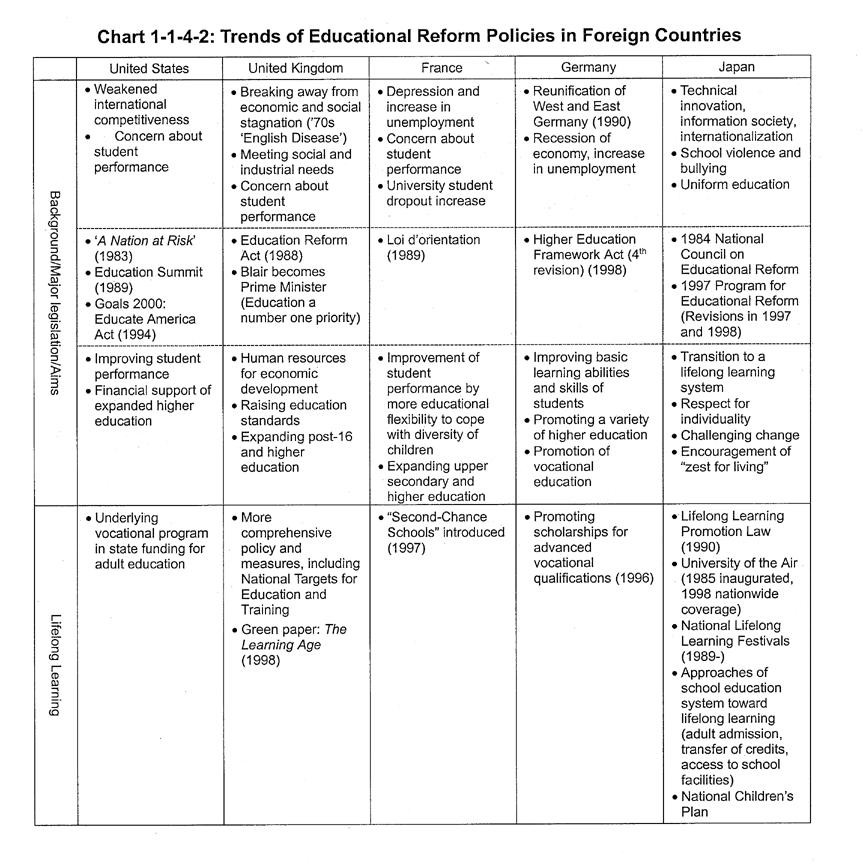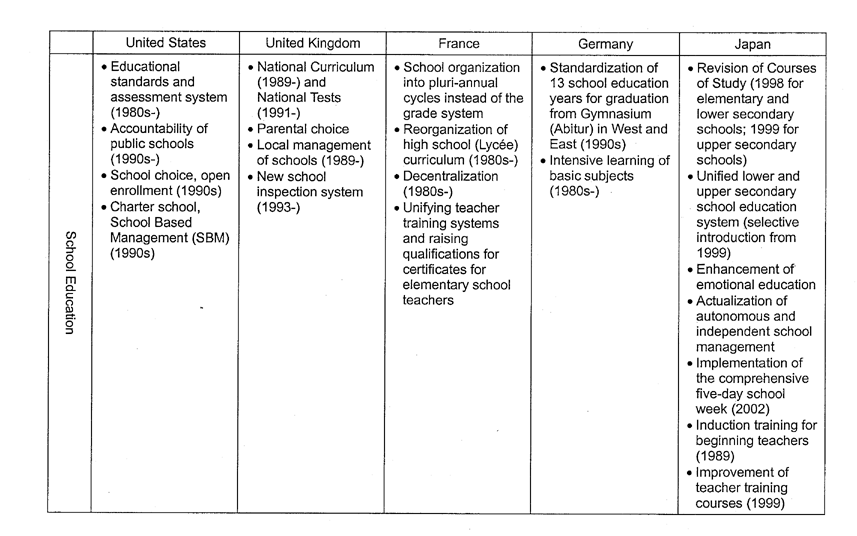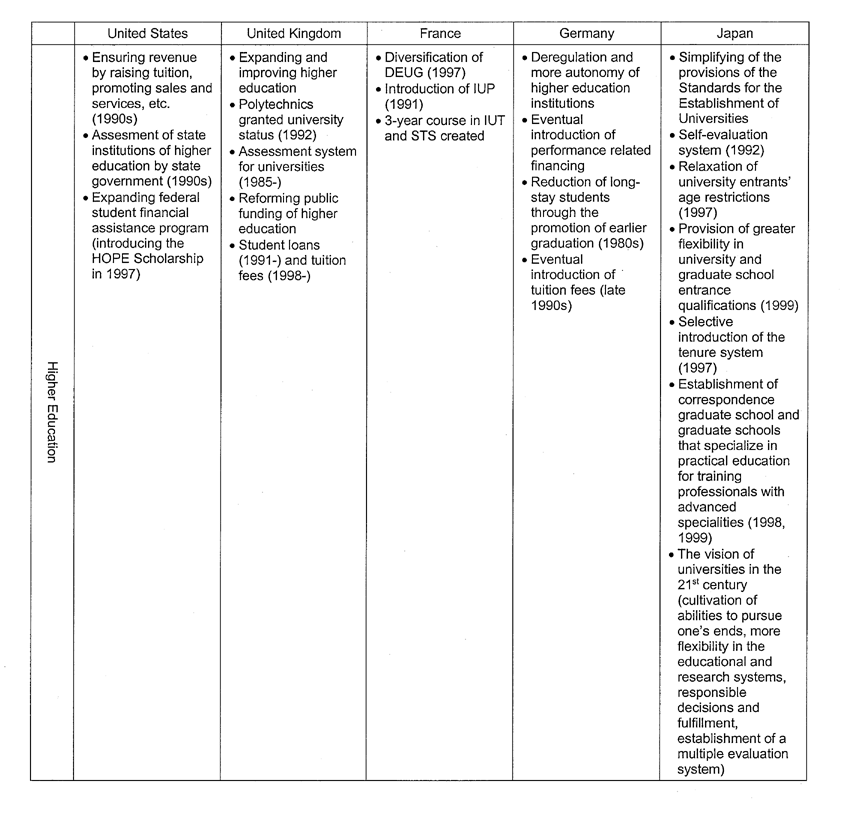| Home > Policy > White Paper, Notice, Announcement > White Paper > Japanese Government Policies in Education, Science, Sports and Culture1999 > Part1 Chapter Global Trends in Educational Reform 3 | ||
What kind of educational content does each country aim to realize by means of educational reform?At the primary and secondary education level,in both the United States and the United Kingdom,"raising student performance"is a definite objective of educational reform.To achieve this objective,efforts have been made to standardize the curriculum or to develop a com-mon curriculum,so that all children will learn the same content anywhere in the country.On the other hand the creative initiative of individu-al schools are valued in attaining this objective,and at the same time deregulation approaches and market principles have been adopted in making each school responsible for the level of achievement of the objective.Meanwhile,in Japan one objective of reform may be defined as slimming down education contents and nurturing in children a"zest for living"through a liberal,flexible and comfort-able school life.While this objective is signifi-cantly different from those adopted in the United States and the United Kingdom,all of these re-form movements are the product of reaction to perceived deficiencies in the individual coun-try's educational system.Those in the United States and the United Kingdom started with criticism and review of excessive diversity in the school curriculurn,while in Japan the reform efforts started with a review of excessive uni-formity in the curriculum.In the Organisation for Economic Co-operation and Development(OECD)a study of the development of"life skills,"including prob-lem-solving ability across different subjects and cooperation with others,is being undertaken.In China"qualities-oriented education"is needed.These are other indications that efforts have started in many countries to develop new con-cepts of student performance,as opposed to the more traditional concept of academic achieve-ment in which only the quantity of the knowledge acquired by students is valued.Due to the increasing proportion of students advancing to higher education,many countries have already or nearly realized the"universali-zation"of higher education.Among the impor-tant common issues faced by many countries are the following:
In North American and European countries emphasis is placed on vocational training in-tended to enable young people to acquire voca-tional abilities as pari of measures against un-employment,while in Japan the government is committed to developing a learning society where a wide variety of activities,including cultural and sporting activities,will be pro-moted.-Although the emphasis of government policies in Japan seems to be somewhat different from North American and European countries,all these governments share a common belief in the value of lifelong learning.The learning process should not end with completion of a formal education provided during the earlier years of people's life,but should continue throughout life.For example,in the United Kingdom the government has clearly announced its policy for the creation of a lifelong learning society.
Charter schools are a new type of public school deriving from educational reform efforts todraw upon the original ideas of individual schools aiming at improving student achievement. Parents,teachers and local organizations can create new schools or convert existing schoolsthat embody their own vision of ideal education by authority of a charter granted by state boardsof education,local school boards or other public institutions.Operating expenses are coveredwith public funds. Charter schools have the following characteristics: These schools operate with freedom from regulations that apply to traditional publicschools's district boundaries in many areas,including curriculum,teaching methods,andteacher qualifications
These schools are selected by families across and within school districts. Based on these principles,an extremely diverse range of education is available,includingeducation targeting children with learning difficulties or histories of juvenile delinquency,edu-cation in classes of children of different ages,and education focusing on the arts. However,if a school fails to meet educational goals in the charter granted by an authorizedsponsor,for example,not maintaining fixed levels of student performance,then the charter isrevoked. The first charter school was established in Minnesota in1992,and by1998,there were1,050of these schools in28states.Though this number comprises less than1%of schools in theUnited States,President Bill Clinton has pledged support to states to increase the total to3,000by the year2000. |



| Back to Top | MEXT HOME |